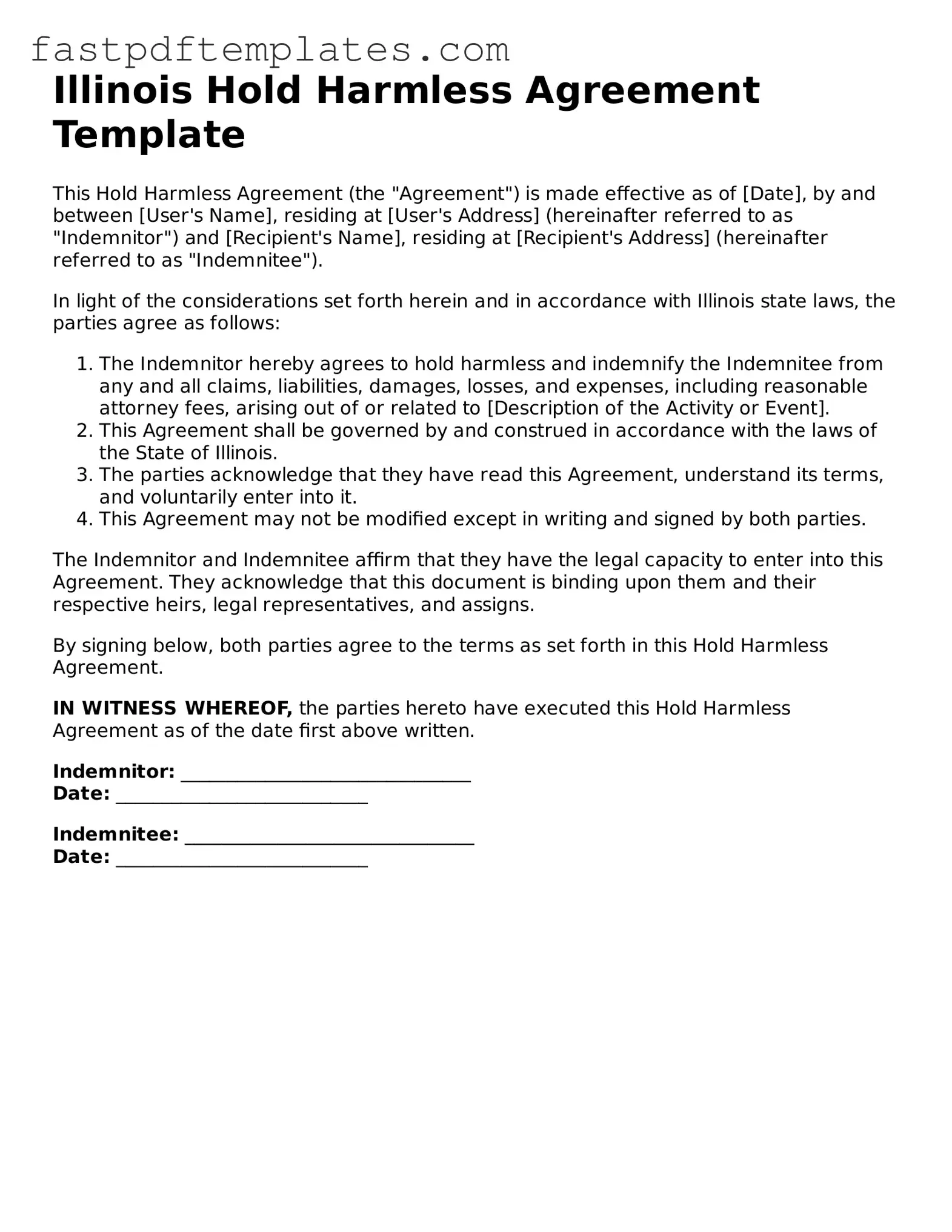Illinois Hold Harmless Agreement Template
This Hold Harmless Agreement (the "Agreement") is made effective as of [Date], by and between [User's Name], residing at [User's Address] (hereinafter referred to as "Indemnitor") and [Recipient's Name], residing at [Recipient's Address] (hereinafter referred to as "Indemnitee").
In light of the considerations set forth herein and in accordance with Illinois state laws, the parties agree as follows:
- The Indemnitor hereby agrees to hold harmless and indemnify the Indemnitee from any and all claims, liabilities, damages, losses, and expenses, including reasonable attorney fees, arising out of or related to [Description of the Activity or Event].
- This Agreement shall be governed by and construed in accordance with the laws of the State of Illinois.
- The parties acknowledge that they have read this Agreement, understand its terms, and voluntarily enter into it.
- This Agreement may not be modified except in writing and signed by both parties.
The Indemnitor and Indemnitee affirm that they have the legal capacity to enter into this Agreement. They acknowledge that this document is binding upon them and their respective heirs, legal representatives, and assigns.
By signing below, both parties agree to the terms as set forth in this Hold Harmless Agreement.
IN WITNESS WHEREOF, the parties hereto have executed this Hold Harmless Agreement as of the date first above written.
Indemnitor: _______________________________
Date: ___________________________
Indemnitee: _______________________________
Date: ___________________________
